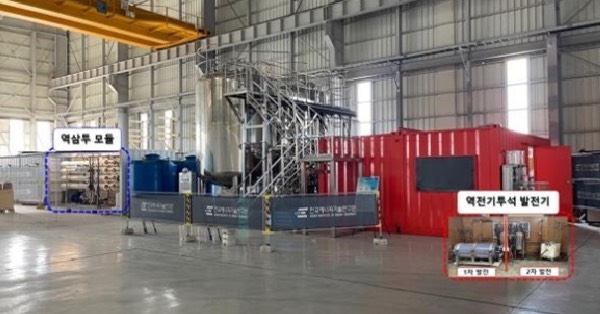
A Korean research team has developed a process to produce both eco-friendly freshwater and electricity through a combination of reverse electrodialysis (RED) and reverse osmosis (RO) processes.
A research team led by Jeong Nam-jo of the Korea Institute of Energy Research announced on July 21 that they developed a fusion process that puts a RED generator before and after an RO module of a desalination process. They have also developed a pattern-type ion exchange membrane for RED and an osmosis membrane for RO.
RED is a method of generating electricity using electric potential differences made when ions between seawater and freshwater are separated and moved through an ion exchange membrane in a stack, according to the institute. In addition, RO is a phenomenon in which a pure solvent escapes from a solution through a semi-permeable membrane when pressure higher than osmotic pressure is applied and is used for the desalination of seawater.
The RED generator placed before the RO module can supply energy to the RO process after reducing the concentration of seawater by 20 percent or more while producing energy using seawater. The consumption of energy for the RO process decreases as much as a drop in the concentration. The concentrated seawater discharged together with the fresh water through the RO process is stored as a high-density energy source and converted into electricity when needed using the RED generator after the RO module.
Achieving process capacity expansion and optimization will cut desalination production cost by more than 10 percent, and average actual power generation cost per one kWh of electric power can be reduced to less than 130 won, the research team explained. The global market for seawater desalination technology is expected to grow by more than 15 percent annually and reach 38 trillion won in 2025.
“Our new technology can really interest those in the Middle East, Southeast Asia and Europe,” Dr. Jeong said. “We will be able to lead the world in this technological field. We are planning to begin developing a test plant with a large capacity of 2000 tons or more per day to go global.”
Source: BusinessKorea








































